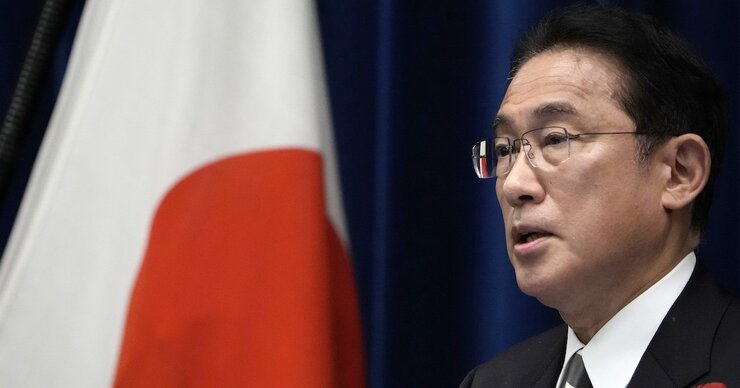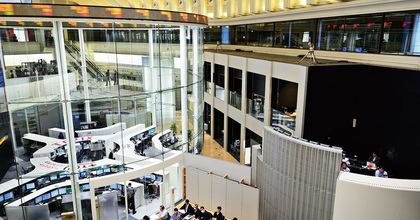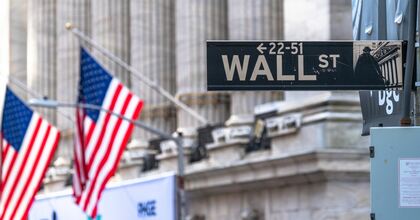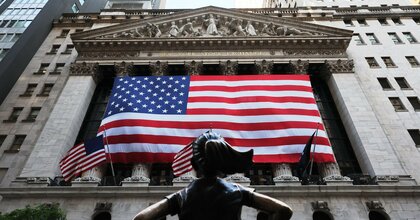Originally published in Japanese on Sep. 30, 2022
Gridlock ahead
Like Japan’s Diet, America’s legislature has a lower and upper house — the House of Representatives and Senate, respectively. All 435 House seats are up for re-election every other November. This year, 35 of 100 Senate seats are up.
President Joe Biden’s Democrats now control both chambers, but if they lose just six net House elections, the lower chamber will swing Republican. Midterms mean that is likely to happen. Since 1945, the president’s party has lost House seats in almost every midterm. Unpopular U.S. presidents lose an average of 38 seats. While the Democrats may not lose quite that many this year, Biden’s dismal 40% approval rating suggests the Republicans should win control.
The Senate is murkier. It is now split 50-50. Vice President Kamala Harris breaks ties, favoring Democrats. A one-seat gain by Republicans could flip control. However, only about five seats are true contests, and they mainly tilt Democratic.
Since 2021, thin majorities have let Democrats pass big spending bills and fund their regulatory goals — barely. Furthermore, the party controlling each chamber fully dictates which bills get voted upon. With control of both chambers, Democrats can put forward major legislation at any time, keeping uncertainty high. Republican control of either chamber would thwart that completely, meaning nothing huge passes — gridlock.
Stocks love it. They don’t prefer either party but hate major legislation. As I explained in May, sweeping changes create winners and losers, and behavioral psychology shows people hate losing much more than they like winning. The creation of winners and losers means uncertainty rises, and hard-core gridlock ends that. Knowing rules can’t change much, businesses can plan and deploy long-term capital more confidently. Investors feel more comfortable taking risks.
History demonstrates it. Since good U.S. data started in 1925, America’s S&P 500 has been flattish in the first three-quarters of midterm years (in US dollars) while hot campaign rhetoric roils sentiment. But as election day nears, stocks begin pre-pricing the likely result — gridlock. Hence U.S. midterm year Q4s have risen 83.3% of the time, gaining an average of 6.3%.
The party doesn’t stop there. Returns average 6.6% in the ensuing Q1 and 5.5% in Q2. Returns were positive in 87.5% of both quarters — midterm magic.
Gridlock goes global
That is in America. The good news: Tightly correlated developed markets mean Japanese stocks benefit from America’s reliable midterm magic. The TOPIX and S&P 500 have a correlation of 0.58 — fairly strong, given that 1.0 is lockstep movement and -1.0 is the polar opposite. Hence, since the first U.S. midterm with good Japanese data in 1986, Japan’s stocks have floundered similarly through September of midterm years, averaging 1.3% in Q1, followed by -0.6% and -4.7% in the subsequent two quarters. They rise only about half the time — 15 of 29 quarters (through Q2 2022). But Japanese stocks consistently flip positive in midterm Q4s, averaging 1.0% gains. Gains continue into the following year, too — 4.7% in the ensuing Q1 and 2.6% in Q2. Less than in America, but still positive.
The same trend is seen elsewhere, especially in markets more tightly correlated with that of the U.S., meaning Japanese investors who shop globally likely benefit most from midterms’ magic. Consider the eurozone, whose stocks’ correlation with the S&P 500 is a mighty 0.81. Good data for the 19-nation bloc started in 1988. Since then, returns average -3.2% per quarter in the first three-quarters of U.S. midterm years. They are positive only 54% of the time. That flips to a 3.4% gain in Q4, then 4.5% in the following Q1, and 3.8% in Q2. Stocks rose in 75% of those three quarters.
The exception that proves the rule
Many Japanese investors have long hoped for active governments that would pass reforms that could fix the problems they envisioned plaguing the economy since 1990. So when the late Prime Minister Shinzo Abe and the LDP reclaimed power in 2012 with a huge majority, optimism surged. They even managed to pass some reforms. Yet since December 2012’s vote, the TOPIX is up 206% while the world, excluding Japan, is up 316%. Active governments enacting supposedly pro-market reforms seem great… until you get them. That is reason to cheer Prime Minister Fumio Kishida’s fading popularity — it renders action less likely.
This year’s rough and rocky first half pre-priced wide-ranging fears. Now, with November drawing near, America’s midterm miracle should spell better times ahead.
Ken Fisher is the Founder and Executive Chairman of Fisher Investments, a $200 billion global investment management firm spanning Asia, North America, Europe, Australasia, and the Middle East. He is the author of 11 books, including four New York Times Bestsellers, and writes customized columns in leading publications in 15 countries. He lives in Dallas, Texas. The views expressed here are his own.











